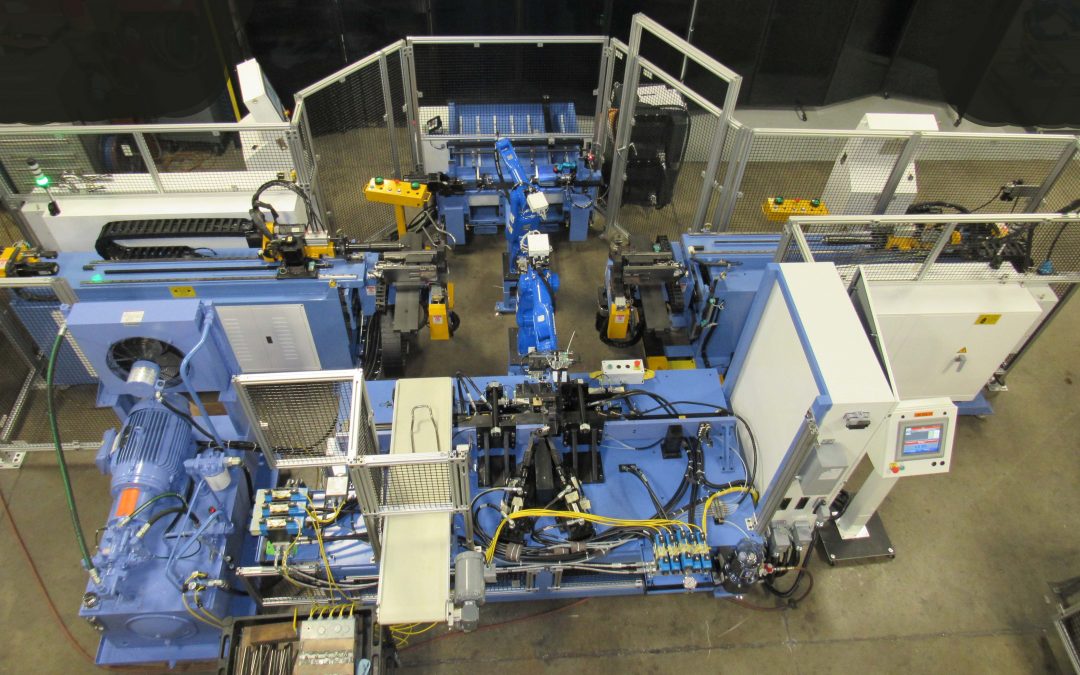When SMT Industries begins a project for a client, we are equipped with 47 years of experience plus resources to produce custom-built assembly or custom tube bent for their immediate needs. We have the skill to design machines to implement into their manufacturing processes or to provide them with the custom tube bending required to complete their product. We can start with a print and build to suit most production requirements and customer machine specifications.
When it comes to tube bending automation, we have a procedure that will help our customers achieve their end product. It starts with tube storage and singulation in the tube hopper. First, the tube must be straight and of a reasonable length and diameter ratio.
The next step is finding the seam of the tube. Not all tubes have a seam, but if they do, you must locate it and that process can be done in several ways: laser scanner, vision camera or eddy current. The previous methods are most common and have various costs, complexities, and repeatability factors to consider.
After you have located the seam, the next step is to transfer the tube to the bending machine with the proper orientation. Again, you have several options to consider in loading your bending machine. One option is a side loading mechanism, and this is reasonable, but has less degree of flexibility than other methods. Another option is to use automatic loading via a 6 axis robot with a gripper and effector. This loading method provides more degrees of flexibility in loading but does require more skill to maintain the operation. Each method works, but you need to evaluate your job to determine the best method for your manufacturing needs.
As you engage in the actual bending process, you need a bender with some flexibility and benders come in a variety of sizes and shapes. Therefore, you should utilize a bender that exceeds the bending requirements or needs for the project by 10-20%. The smallest bender that meets the tube bending needs will be the fastest bender and save you time and money.
After the bending process is completed on each tube, you need to unload the bender and there are many options just like loading the bender. Oftentimes, you can use the same robot that loaded the bender to unload the bender. However, you could have a dedicated unloader mechanism as another option. Some projects may need an ejector cylinder to send the part into a chute. These are all considerations to ponder when you set up the bending process.
Part of the tube bending process, are the other options in the procedure. These options can help your customer increase efficiency in their manufacturing process. Such options include the following: Coping, Endforming, Forming, Welding, Marking, Hole Punching, Beading, Flaring and Swaging to name a few. All in all, SMT Industries is skilled and knowledgeable on how to make your custom tube bending project be seamless and work into your manufacturing process. Contact us today to plan your next project utilizing our expertise.

